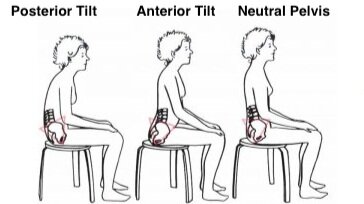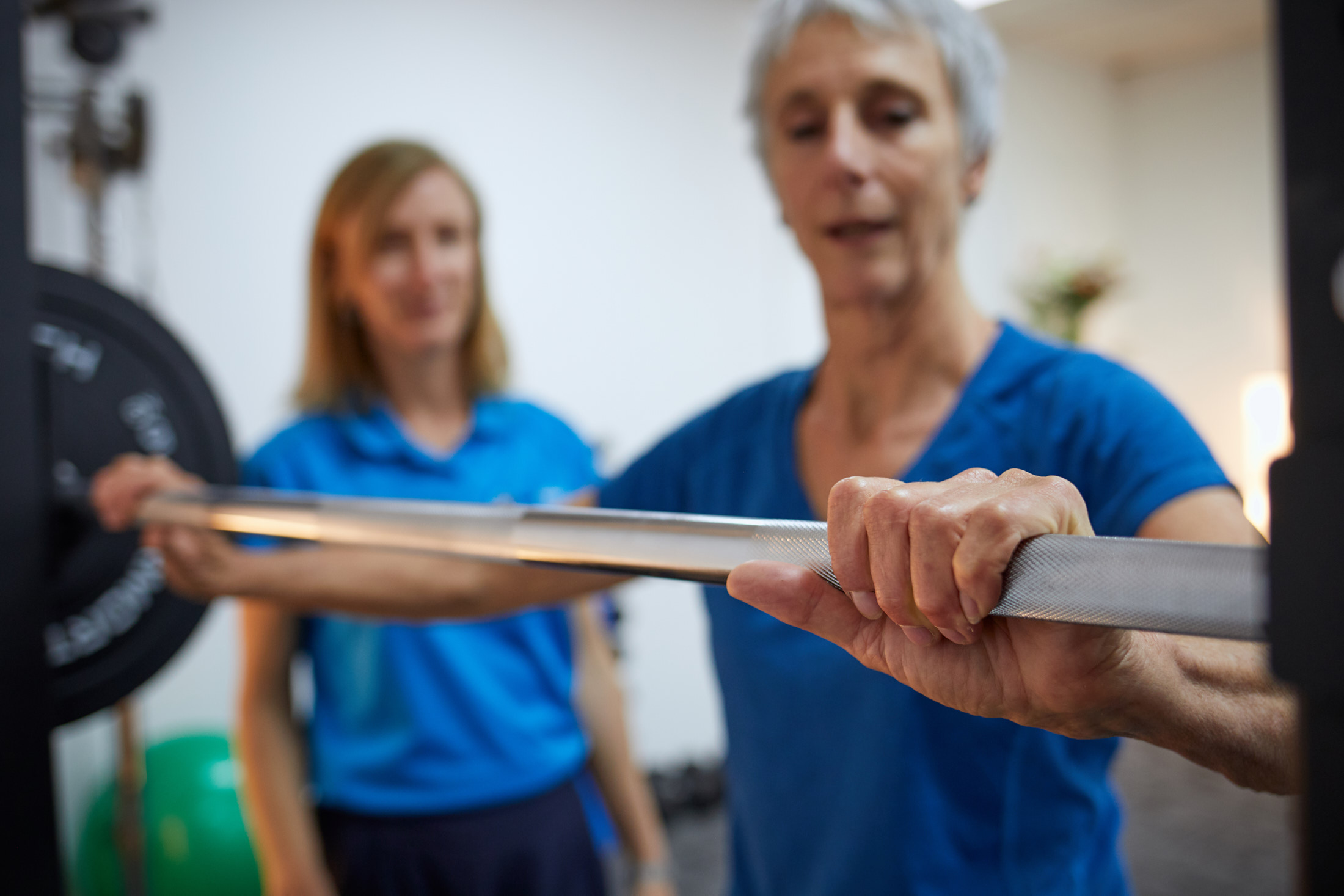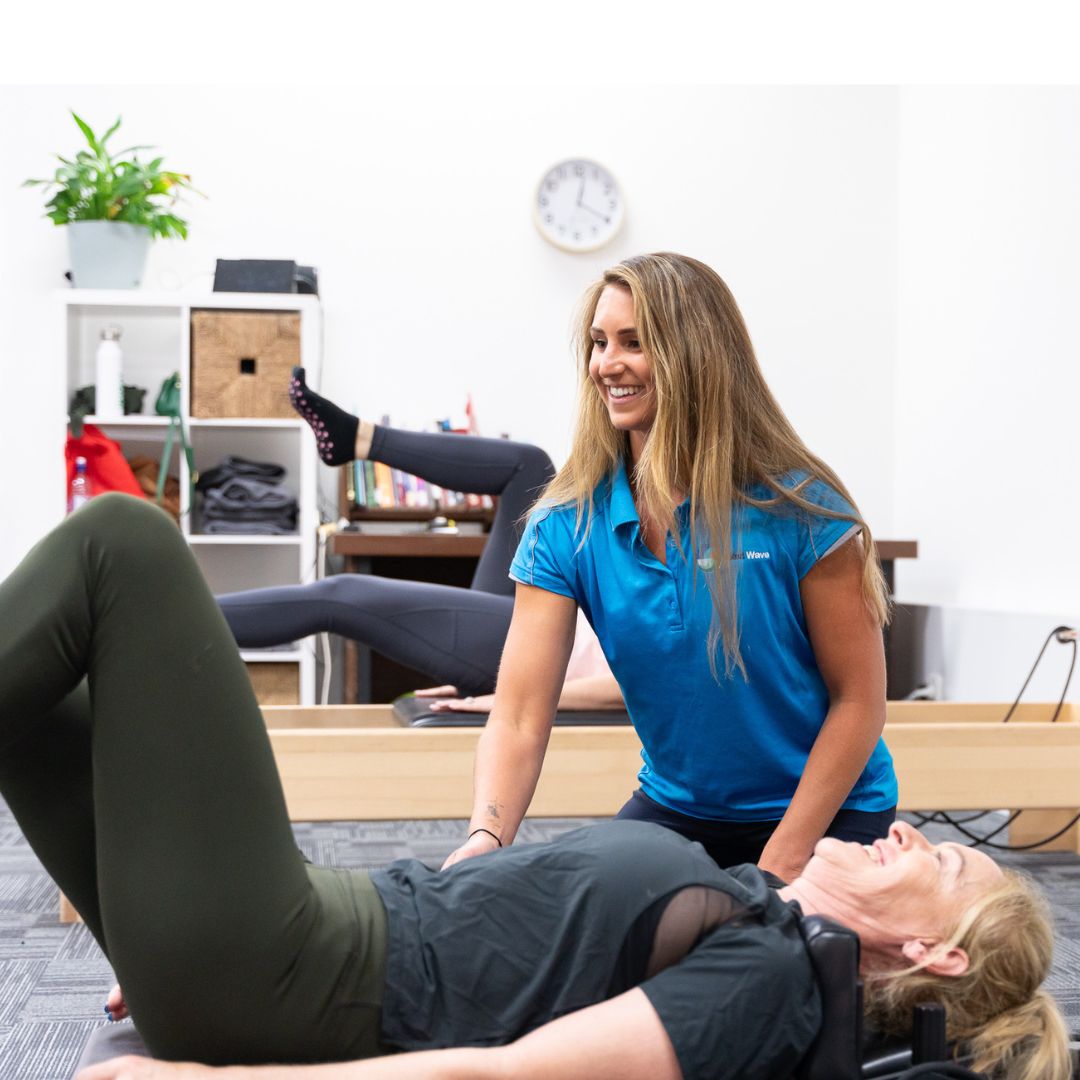
Working From Home Ergonomics
With #WFH becoming the latest hashtag, have you been noticing any new or different pains in your body?
Many of us slipped into the WFH life without time to think about how our new home office setup might be impacting our bodies. Some will experience neck or back pain, some may experience headaches and have no idea why. While the headache may feel like it’s from finding motivation to reach that deadline while your partner ferrets around on Job Keeper, it’s more likely that the pain could be attributed to your workstation set up.
Let’s talk about ERGONOMICS!
As a general rule, when seated at your desk, you want each joint in your body to be at a 90 degree or more angle.
Let’s start at the pelvis.
The chair you sit in should support your pelvis to sit in a neutral position. The diagram below shows what this looks like.
The good news is, it’s not about spending hundreds on that fancy “ergonomic” chair, it’s about finding a chair that supports your body and your pelvis in a neutral position.
Next let’s look at the knees.
Again, apply the 90 degree or more rule. How do you change the angle at your knees? Adjust the height of your chair! This is why height adjustable chairs are key for having an awesome workstation setup! If the angle at your knees is less than 90 degrees, raise the height of the chair. If it’s much more than 90 degrees you may want to lower the height of your chair.
Ensure your feet sit flat on the floor or a foot rest.
Why? Dangling legs = increased strain on the lower back. To reduce strain on the lower back and distribute your weight through your legs, place your feet flat on the floor or on a foot rest.
Now let’s look at the upper body.
To keep your elbows at a 90 degree or more angle, and prevent shrugging your shoulders, we need to consider desk height. Change the height of your desk to change the position of your shoulders and/or angle at your elbows. When your desk height is fixed, change the height of your chair.
Last, we need to look at the position of our screen.
Ideally you screen should be at an arms- length away and the top of the screen should be just above eye level.
That’s the bread and butter of workstation ergonomics. Next Wave Therapy Occupational Therapists are full of tips and tricks on how to make ergonomics work for you at home using what you already have.
How an occupational therapist can help you work from home?
Occupational Therapists also look at occupational balance, these are your life domains such as daily living, home duties and leisure activities.
5 Tips to get you started with pain free WFH
-
Move regularly – Our bodies are made to MOVE! Take regular breaks, get up to move and stretch and change your position when you can. Alternating between sitting and standing desks is a great way to do this.
‘If I have a perfect workstation setup will I have no pain?’
Sorry, we wish that were the answer but sitting in a rigid position for hours on end is never helpful for our bodies regardless of how ‘ergonomically correct’ your posture is.
-
Maintain regular hours – Create a morning routine, take a full lunch break, schedule other breaks and have a ritual or routine to clearly mark the end of the day. This may be putting a closed sign on the home office door or placing a table cloth over your desk if it is in a main living area.
-
Establish clear boundaries – Set ground rules with others living with you, have a separate work phone, keep a dedicated work space and work within your capacity.
-
Stay connected – attend meetings, ask for help, find ways of keeping social interactions going like scheduling a coffee break with a colleague and
-
Be positive – smile, relax and check your mind set. Go outdoors, take time for your other home activities such as leisure, exercise and house duties.
Working from home isn’t just about ergonomics. And there is so much more to consider when we are experiencing pain. For more complex workstations and musculoskeletal conditions it’s worth contacting one of our Occupational Therapists to complete a full postural and seating assessment.
Written by Zoe Cole, Occupational Therapist
Copyright Next Wave Therapy







